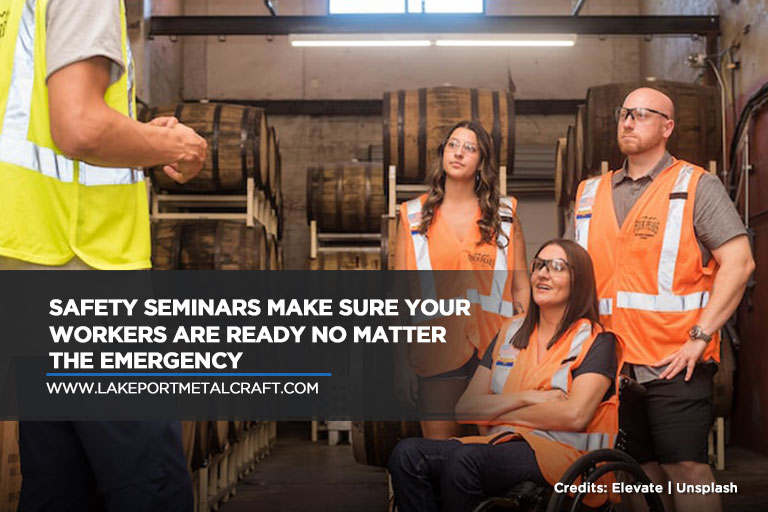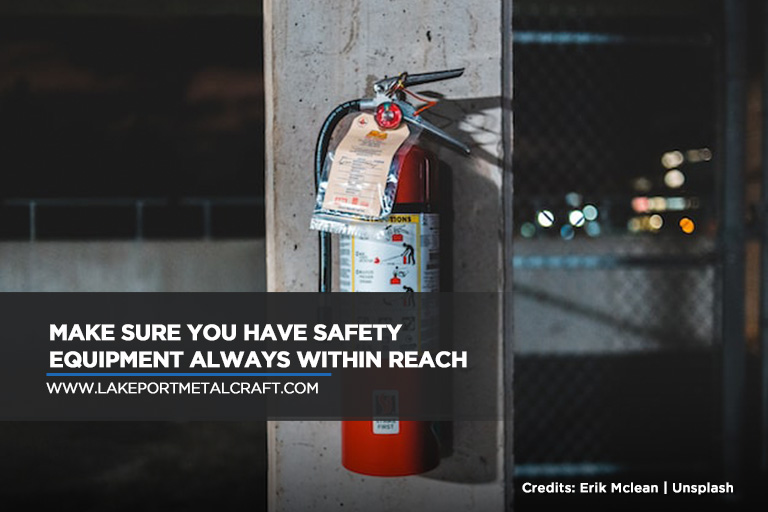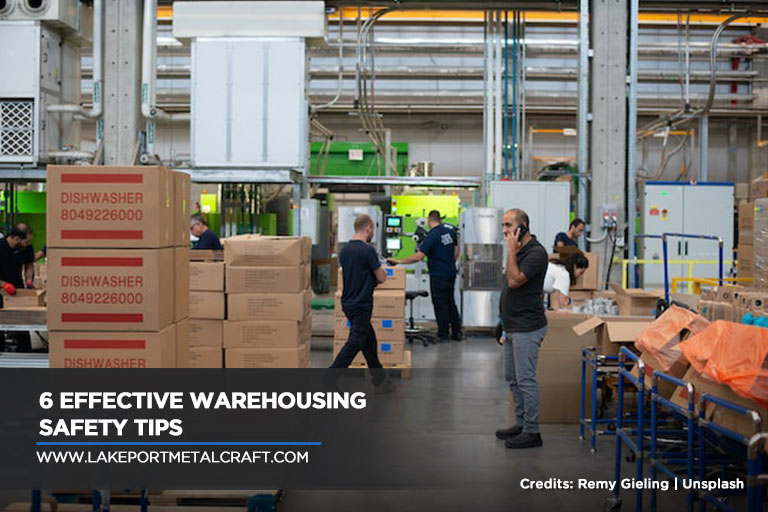The core of any distribution chain is its warehouse. This makes it an essential part of a business. However, a slip in judgment can result in costly disasters. Safety must be a priority at all times, which is why you need to consider how to secure your warehousing facilities. In this article, we look at the best warehouse safety procedures, nuggets of wisdom from various industry experts, and ways to improve warehouse safety by adopting a few core safety tips.
Though warehouses may play a central role in the distribution network, proper operational procedures are frequently disregarded. Operating a safe and fully functioning warehouse reduces the possibility of industrial on-the-job accidents, as well as the potential costs that come with it.
This would result in fewer roadblocks and obstacles in the processing funnel, less technical failures owing to incorrect operations or a lack of understanding, and good working conditions that prioritize the health and safety of employees.
- Establish warehouse safety protocols
The first step is to establish a warehouse safety protocol. Warehouse safety protocols are basically a set of instructions and guidelines for every employee to follow in order to prevent accidents or other issues. In the event of any mishap within the warehouse, your warehouse safety protocol should also include what should be done during an emergency scenario as well as what employees should do during the aftermath.
An effective safety guideline that covers a wide array of scenarios gives your employees the confidence to work more efficiently in their environment. Additionally, this set of rules and regulations minimizes the risk of any injuries and other issues that can disrupt daily operations.
- Allow only trained professionals to operate heavy machinery
Depending on how large your warehouse is and how complex the processes are, there’s a good chance that you will have a set of heavy machinery to help you do the laborious work. When it comes to power tools and saws, all the way to heavier types of equipment such as forklifts and reach trucks, make sure that only trained professionals have access to operate them.
Trained professionals not only know the basics of operating the machinery but also have the ability to use the machinery safely and within the limits specified in the manufacturer’s manual.
If you are in need of additional personnel, consider investing in quality training for them. Simply having them try out the equipment and observing your other trained employees will not suffice.
Additionally, you may want to invest in some quality upgrades to ensure the safety of your operators such as underride protection to keep them safe during rearward impact.
- Organize safety training sessions

Safety is everyone’s concern. This is why it is important that you organize training sessions and safety seminars. This instills the discipline needed for your employees to stick to your warehouse safety guidelines and the confidence to handle various situations.
Invite safety experts such as your local fire officers, police officers, paramedics, and more. These specialists have the necessary expertise and are more than willing to impart their knowledge to help keep your environment safer.
Additionally, it would be best to involve not just the personnel working in the warehouse, but also your employees that work in the offices. Emergencies can happen anywhere in the workplace. It is best if your entire workforce is equipped, trained, and prepared to handle any emergency.
- Assess and reassess safety hazards
No matter what you do, a warehouse is an inherently dangerous workplace. After all, workers deal with machinery and other forms of safety hazards every day.
This is why you have to constantly assess and reassess the safety of your warehouse. Conducting regular inspections and assessments of safety hazards and developing solutions for a safer workplace goes a long way.
Know that the best source of information regarding these safety hazards is your employees themselves. Since they are the ones who are working in the environment and are exposed to these hazards, they have the best idea of which aspects you need to work on. Involve them in the assessment.
Additionally, you may want to invite some industry experts, such as fire marshalls and police officers, to conduct safety inspections to help you develop better guidelines for safety.
- Emphasize organization and cleanliness
Having a well-organized warehouse will ensure that employees will know exactly where things are and how they can get to the things they need. During an emergency, a well-organized warehouse can mean the difference between quick solutions and disaster. A well-organized warehouse also involves organizing your workforce. Having each person know their role in an emergency can contribute to improving safety.
Cleanliness must also be taken into account along with other policies. Debris, spillage, and other forms of unmanaged waste can cause significant risks to your daily operations and overall performance.
- Have emergency equipment ready and accessible

Sometimes, no matter how much you prepare, accidents happen. This is why it is important to have emergency equipment on standby. This can include but is not limited to fire extinguishers, first aid kits, radios, and personal protective equipment. You should also make sure that your workforce is sufficiently trained to use these pieces of equipment so someone can use them safely and effectively.
This is why there is a need to have a well-trained workforce. Train them not just to prevent accidents but also how to react when such incidents arise.
Invest in Quality Upgrades for Equipment
Investing in quality upgrades and improvements for your various pieces of equipment must also be taken into account. This includes your forklifts and reach trucks. Tools, like The Backbone, ensure that your operators are safe and your warehouse remains operational and effective. The Backbone is able to withstand rearward impact and does not interfere with the operational capability of your forklift.
For more information, you may contact us at 416-587-5809.


